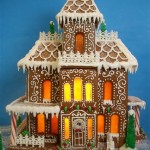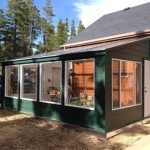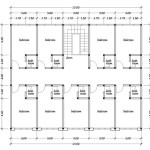Dolls House Pot Plants: Miniature Greenery for a Detailed World
Dolls houses represent meticulously crafted miniature worlds, recreating the architecture, furniture, and everyday objects of real-life homes on a smaller scale. A crucial element in achieving realism within these miniature settings is the inclusion of plants and greenery. Dolls house pot plants, in particular, add a touch of life, color, and authenticity to any dolls house, breathing vitality into each room or outdoor space.
The creation and selection of dolls house pot plants require careful consideration of scale, materials, and aesthetic consistency. The aim is to produce miniature plants that are both visually appealing and proportionally accurate to the surrounding environment. These miniature plants are not mere decorations; they contribute significantly to the overall narrative and realism of the dolls house, adding layers of detail that enhance the miniature world.
The availability of dolls house pot plants ranges from commercially produced items to handcrafted, artisanal pieces. The choice often depends on the desired level of detail, the overall aesthetic of the dolls house, and the budget allocated to landscaping. Whether sourced from specialist retailers or crafted with patience and skill, dolls house pot plants are an essential component in creating a believable and inviting miniature home.
Scale and Proportion: The Foundation of Realism
The most fundamental consideration when selecting or creating dolls house pot plants is scale. Dolls houses generally adhere to a specific scale, most commonly 1:12, meaning that one inch in the dolls house represents twelve inches in real life. Therefore, a miniature plant intended to represent a real-life plant that grows to two feet tall should be approximately two inches tall in the dolls house. Inaccurate scaling immediately detracts from the realism and cohesiveness of the miniature scene.
The scale extends beyond the overall height of the plant. The size of the leaves, the diameter of the pot, and the thickness of the stems must all be proportionally accurate. Oversized leaves on a small plant, or a tiny plant in an enormous pot, will appear visually jarring and out of place. Reference images of real-life plants are invaluable during the selection or creation process, ensuring that the miniature version maintains the correct proportions.
Furthermore, the type of plant being represented must be carefully considered. Certain plants, such as succulents, naturally have smaller leaves and a more compact form, making them easier to replicate accurately in miniature. Larger, leafier plants, such as ferns or monsteras, require a higher degree of skill and attention to detail to maintain a believable scale. The choice of plant should align with the skill level of the creator and the overall ambition for realism within the dolls house.
Materials play a critical role in achieving realistic scaling. Fine wire can be used to create delicate stems, while thin paper, fabric, or polymer clay can be shaped into leaves. The choice of material often depends on the desired texture and level of detail. For example, silk fabric can create a realistic sheen on leaves, while polymer clay allows for intricate detailing and the addition of veins or textures.
The pot itself is an important detail to consider in relation to scale. A pot that is too large or too small will disrupt the overall balance of the miniature scene. Miniature terracotta pots, ceramic pots, or even hand-painted plastic pots are available in various scales and styles. The pot should complement the plant and the overall design of the room or garden where it is placed.
Materials and Techniques: Crafting Miniature Greenery
The materials used to create dolls house pot plants significantly impact their appearance and durability. A wide range of materials are employed, each offering unique advantages and disadvantages. The selection process should consider the desired level of detail, the desired aesthetic, and the longevity of the miniature plants.
Polymer clay is a popular choice for creating detailed and durable dolls house pot plants. It can be easily molded into various shapes and textures, and it hardens permanently when baked. Polymer clay allows for the creation of intricate details, such as veins on leaves, patterns on flower petals, and realistic textures on succulent leaves. It can also be painted to achieve a wide range of colors and finishes.
Paper is another versatile material, particularly for creating delicate leaves and flowers. Various types of paper, such as crepe paper, tissue paper, and parchment paper, can be used depending on the desired texture and transparency. Paper can be cut, shaped, and glued to create realistic-looking foliage. It is particularly well-suited for creating delicate flowers, such as roses or orchids, where the thinness and flexibility of the paper allow for intricate detailing.
Fabric, especially silk or fine cotton, can be used to create realistic leaves and petals with a natural sheen. Fabric can be dyed or painted to achieve the desired colors and patterns. It can be cut, shaped, and glued to create delicate foliage. Fabric is particularly well-suited for creating leaves that have a soft, flowing appearance.
Wire is essential for creating stems and branches. Fine wire, such as floral wire or beading wire, can be easily bent and shaped to create realistic-looking stems. The wire can be wrapped with floral tape or painted to match the color of the stem. Wire provides the necessary structure and support for the leaves and flowers, ensuring that the plant maintains its shape over time.
Various techniques can be used to assemble the miniature plants. Gluing is the most common method, using a strong adhesive to attach the leaves and flowers to the stems. Wire wrapping can also be used to secure the components together. Painting and weathering techniques can be applied to enhance the realism of the plants, adding subtle details such as color variations, shading, and highlights.
Placement and Context: Integrating Plants into the Miniature World
The placement of dolls house pot plants is crucial for achieving a realistic and visually appealing miniature scene. The plants should be carefully positioned to complement the surrounding furniture, décor, and overall architectural style of the dolls house. Thoughtful placement can enhance the sense of realism and add depth and interest to the miniature world.
Consider the purpose of the room or space when selecting and placing the plants. A living room might benefit from larger, more decorative plants, such as ferns or palms, placed in prominent locations. A kitchen might feature smaller, more practical plants, such as herbs or succulents, placed on windowsills or countertops. A bedroom might feature delicate flowering plants, such as orchids or violets, placed on bedside tables or dressers.
Think about the lighting within the dolls house when placing the plants. Plants should be positioned in areas where they would naturally thrive in real life. Plants that require bright light should be placed near windows or under artificial lighting. Plants that prefer shade should be placed in darker corners or away from direct light.
Group plants together to create a more natural and visually appealing arrangement. A cluster of small plants can be more impactful than a single, isolated plant. Arrange plants of different sizes, shapes, and textures to create a dynamic and varied display. Consider the color palette of the plants and their surroundings to create a harmonious and balanced composition.
Use dolls house pot plants to enhance the narrative of the miniature scene. A neglected plant with drooping leaves can suggest that the dolls house resident is experiencing a difficult time. A thriving plant in full bloom can suggest that the resident is happy and content. The plants can serve as subtle visual cues that add depth and complexity to the miniature story.
Consider the overall style of the dolls house when selecting and placing the plants. A Victorian-era dolls house might feature elaborate potted plants with ornate containers. A modern dolls house might feature minimalist plants with simple, geometric pots. The plants should be consistent with the overall aesthetic of the dolls house.
Finally, remember that less is often more. Avoid overcrowding the dolls house with too many plants. A few carefully selected and strategically placed plants can be more effective than a large number of haphazardly arranged plants. The goal is to enhance the realism and beauty of the miniature world, not to overwhelm it.

Dollhouse Artificial Mini Potted Plants Statue Tiny Plant Temu

Pretty Little Minis Great Range Of Modern Dollhouse Plants And Pots

4pcs Doll House Miniature Artificial Potted Plant Statue Micro Landscape Mini Pot Simulation Flower Ornament Suitable For Outdoor Decor Random Style Shein

1 12 Dollhouse Miniature Mini Tree Potted For Green Plant In Pot Doll House Furniture Home Decor Simulation Plants Temu Kuwait

Pretty Little Minis Modern Dollhouse Plants

Flower Potted Plants Toy House Doll Fairy Garden Temu

Potted Flower For Green Plant In Pot Simulation Plants 1 12 Dollhouse Miniature Doll House Furniture Home Decoration Wish

Dolls House Modern Tall Flower In Coloured Plant Pot Floor 1 12th Scale Miniature Dollhouse Accessories

4pcs Doll House Miniature Artificial Potted Plant Statue Micro Landscape Mini Pot Simulation Flower Ornament Suitable For Outdoor Decor Random Style Shein Usa

10pc 1 12 Scale Dollhouse Miniature Potted Flowers Pot Plant Garden Accessories








